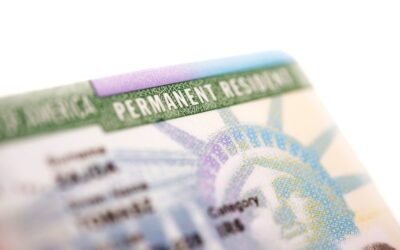Would you like to have more investment options for your retirement savings? Regular IRA investments are limited to stocks, bonds, mutual funds and CDs. A self-directed IRA however offers far greater flexibility.
Its investment choices are not limited to the public market. A self-directed IRA, or SDIRA, also allows for investing in private investments like real estate, private equity, and more. With the right structure, you can even make foreign investments.
However, there are some important rules to follow to avoid penalties.
This article gives an overview of self-directed IRAs, benefits, structuring options, tax implications and more.
- What is a Self-directed IRA?
- Who should invest in a SDIRA?
- Why place the IRA in a LLC?
- What is a Checkbook IRA or IRA LLC?
- What is an Offshore IRA?
- How is a self-directed IRA taxed?
- How to set up a SDIRA?
- Is a Solo 401(k) as good alternative?
- What is self-dealing and how to avoid it?
What is a Self-directed IRA?
A self-directed IRA is any type of IRA, Roth, Traditional, SEP, Inherited IRA or SIMPLE, where the custodian can invest in any investment allowed by law. Attractive investment options include:
- Real estate
- Start-ups
- Private equity funds
- Venture capital funds
- Crypto
- Farmland
- And more
However, the law excludes some investment types.
Specifically, you cannot invest in collectibles like art or stamps, in life insurance, and in stock of an S corporation. Furthermore, investments that involve transactions with close family members and self-dealing are disqualified.
It is important to understand the rules so you don’t run afoul and risk major penalties.
Who should invest in a self-directed IRA?
While the investment diversity of a self-directed IRA is appealing to anyone, someone with foreign investments can particularly benefit.
Many times it offers the opportunity to invest when no financing is available (i.e., foreign real estate) or it would be impossible to get exposure via a traditional 401k custodian.
With an Offshore IRA, meaning placing the SDIRA in an offshore LLC, you can make foreign investments easily and quickly.
Furthermore, your assets are protected from US creditors. More about Offshore IRAs below.
How to maintain full control on IRA assets?
The IRA is controlled by a custodian, who is directed by you and carries out your wishes. More accurately though, the custodian takes your investment requests under consideration but you cannot force him to execute instructions he is not comfortable with.
A US investment advisor is bound by US regulations and has some liability to protect the assets under his control. That means you do not directly control the assets of the IRA.
To maintain control you can open an LLC, either in the US or offshore, which is owned by the IRA and serves as an investment vehicle for the self-directed IRA. Now you as the LLC manager control the assets.
What is a Checkbook IRA or IRA (owned) LLC?
When you have an LLC that is owned by the IRA, as described above, it is also called a Checkbook IRA or IRA LLC.
With an LLC as investment vehicle for the IRA, you as the LLC manager have checkbook control. You can make investment decisions as you see fit.
Most common for an IRA LLC is a US LLC. It allows you to hold US real estate and other US investments. For foreign investments you can still use this LLC. Sometimes however you may also need to open up a local company in order to make an investment locally.
For example, in Colombia it is beneficial to own a real estate investment with a Colombian SAS. In this case, the IRA custodian owns an LLC, which in turn owns a Colombia SAS (which owns the property).
What is an Offshore IRA?
A self-directed IRA with an offshore LLC is also sometimes called Offshore IRA.
The benefits of an Offshore IRA include
- Asset protection
- Ability to invest outside the US
- Full control
Only if you place the IRA into an offshore LLC, you as LLC manager really have full control. The only US regulation you have to comply with is tax reporting.
On the flip side, an Offshore IRA incurs increased cost due to local and US filing requirements. For US tax reporting you would have to file a form 5471 for the offshore LLC. You might minimize this reporting requirement with a Check the Box election. A tax advisor experienced with foreign structures can help you with that.
How is a self-directed IRA taxed?
In general, a self-directed IRA is taxed just like a regular IRA, which means any income inside is tax free. However, there are a few scenarios where taxes must be considered.
Local tax implications of investing abroad
Understand that by investing abroad, local taxes may be due on the income from this investment, which would negate the benefit of a tax free IRA.
The foreign taxes paid in this scenario cannot be used as a foreign tax credit on your personal return. They are essentially lost. In a low tax jurisdiction, this may not matter much. In a high tax jurisdiction however, you lose some upside. Be sure to understand these local tax implications!
UBIT tax for debt-financed investments
UBIT stands for Unrelated Business Income Tax. It applies when an IRA makes a debt-financed investment, for example in real estate or a business.
Any portion of the investment that is attributable to debt is not tax exempt and therefore taxable. You can reduce this taxable portion by expenses such as depreciation.
UBIT tax also applies when an IRA buys LLC ownership in an operating business that is a pass-through entity for taxes (e.g. partnership). A pass-through company has net taxable income that flows down to the IRA as ordinary income, reported on Schedule K-1. It is taxable to the IRA as it does not qualify under any of the investment income exemptions.
Related terms:
UBTI – Unrelated Business or Trade Income
UDFI – Unrelated Debt-Financed Income, it comes into play when buying a property with a loan
If you actively operate or trade a business with funds from the IRA, then any income earned will be taxed.
How to set up a self-directed IRA?
When setting up a SDIRA, you first have to decide if you want an onshore or an offshore IRA.
For an offshore IRA you most likely need a different custodian. US investment firm usually only allow a US LLC. Talk to an experienced advisor about setting up an offshore IRA.
Is a Solo 401(k) a good alternative to a SDIRA?
You may have or heard about a Solo 401(k) as great retirement plan for self-employed entrepreneurs.
Note that only the self-employed can use a Solo 401(k). If you are employed or run a business with employees (other than your spouse) then a self-directed Solo 401(k) is not an option.
A solo 401(k) is a good alternative to a self-directed IRA for self-employed people who want to maximize their tax-advantaged savings. The contribution limit for a Solo 401(k) is with $54,000 much higher than the annual IRA contribution limit. A Solo 40k1k also allows you to contribute up to $18,000 into a Roth solo 401k, regardless of your income level.
A self-directed IRA however is easier and cheaper to set up. So if you already have significant savings in a regular IRA it may make more sense to use those savings and invest via a SDIRA.
You should also take into account the investment type when deciding between solo 401(k) and SDIRA. If you plan to invest in real estate and have debt associated with the investment, the 401(k) offers tax advantages. UDFI, which is Unrelated Debt-Financed Income, triggers Unrelated Business Income Tax, UBIT. A solo 401(k) is exempt from UDFI tax on leveraged real estate.
Don’t forget about the Required Minimum Distribution
Many investors forget about required minimum distributions when investing in non-liquid assets like real estate in a self-directed IRA.
People reaching the age of 70.5 must have enough liquid assets in their account to meet the minimum distribution requirement.
If not then they would need to do a partial distribution of their asset annually. This means getting a valuation each year (of an investment property for example) and having it distributed so that part of it is taxable and reportable on their tax return. This can create a lot of paperwork and headache that investors may not want.
What is self-dealing and how to avoid it?
While a self-directed IRA provides immense investment choices, it prohibits certain transactions. You cannot self-deal, meaning making transactions that benefit you, your close family members or your business (disqualified parties).
For example, you can’t hold real estate that you or your beneficiary or other disqualified person lives in. Similarly, you cannot invest in shares of your own business within your IRA. You can also not loan money from the IRA to yourself or a disqualified party.
Disqualified parties include your spouse, parents, grandparents, children and grandchildren and any companies owned by them. Furthermore, a fiduciary and any person providing services to the plan, such as a CPA or attorney, and their companies are disqualified.
The penalties for conducting prohibited transactions are severe. The prohibited transaction may incur a tax penalty of up to 100% of the transacted amount. In addition the entire IRA account may lose its tax-deferred status.
Self-directed IRAs have substantial benefits but also pitfalls
As you can see, self-directed IRAs offer substantial benefits through flexible investment choices, but also harsh tax pitfalls if not done right. You have to know the rules and play by them.
I’ve seen countless times people taking money out of their regular IRA, subject to penalties and bumping up to a higher tax bracket, only to make an investment that they otherwise could have made with a self-directed IRA.
If you want to invest in foreign real estate using money in your retirement accounts, consider a self-directed IRA. Schedule a consultation to find the best option for you.





